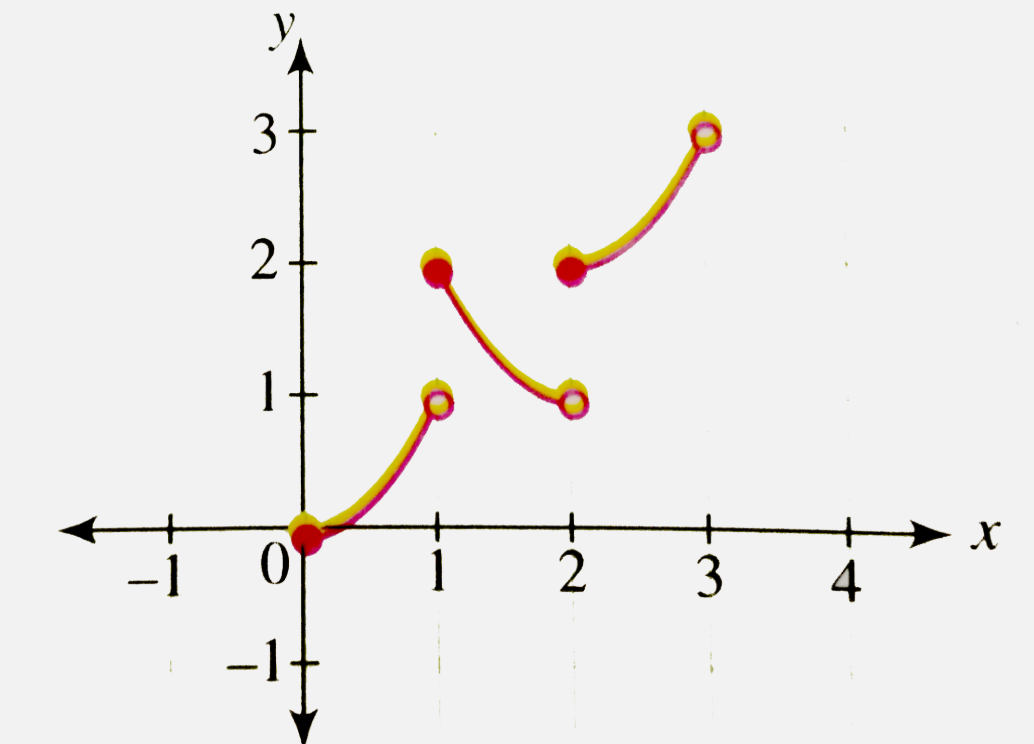Let f:R→[1,∞) be defined as f(x)=log10(√3x2−4x+k+1+10) If f(x) is surjective then k =Solution in Tamil
k=13
k<13
l>13
k=1
The correct Answer is:A
If f(x) is surjective then range of f(x) must be [1,∞).
∴ Range of √3x2−4x+k+1+10∈[0,∞)
⇒ Range of 3x2−4x+k+1∈[0,∞)
⇒ D=0
⇒ 16−12(k+1)=0
⇒ 4−3k−3=0
⇒ k=13
Topper's Solved these Questions
- FUNCTIONSBOOK - CENGAGECHAPTER - FUNCTIONSEXERCISE - Multiple Correct Answers Type
10 Videos
- FUNCTIONSBOOK - CENGAGECHAPTER - FUNCTIONSEXERCISE - Comprehension Type
7 Videos
- EQUATION OF PLANE AND ITS APPLICATIONS -IIBOOK - CENGAGECHAPTER - EQUATION OF PLANE AND ITS APPLICATIONS -IIEXERCISE - DPP 3.4
18 Videos
- GETTING STARTED WITH GRAPHSBOOK - CENGAGECHAPTER - GETTING STARTED WITH GRAPHSEXERCISE - Exercise
18 Videos
Similar Questions
The function f(x)=cos−1⎛⎝2[|sinx|+|cosx|]sin2x+2sinx+114⎞⎠ is defined if x belongs to (where [.] represents the greatest integer function)
View SolutionLet f(x)=x2−2x−1∀x∈R Let f:(−∞,a]→[b,∞), where a is the largest real number for which f(x) is bijective. If f:R→R , g(x)=f(x)+3x−1 , then the least value of function y=g(|x|) is
View SolutionLet A(0,6,6), B(6,6,0) and C(6,0,6) are three points and point D is moving on the line x+z−3=0=y. If G is centroid of ΔABC, then minimum value of GD is
View SolutionDoes the following graph pass the vertical or horizontal line test ?

View SolutionLet f:R rarr[1,oo) be defined as f(x)=log_(10)(sqrt(3x^(2)-4x+k+1)+10) If f(x) is surjective then k=
View SolutionLet f:[-oo,0]rarr[1,oo) be defined as f(x)=(1+sqrt(-x))-(sqrt(-x)-x), then
View SolutionLet f:R rarr A is defined by f(x)=(x-1)/(x^(2)-3x+3) If is to be a surjection, then A should be
View SolutionLet f:(−∞,2]→(−∞,4] be a function defined by f(x)=4x−x2. Then, f−1(x) is
View SolutionLet f:R→R defined by f(x)=x21+x2. Proved that f is neither injective nor surjective.
View SolutionIf f:R→A defined as f(x)=tan−1(√4(x2+x+1)) is surjective, then A is equal to
View SolutionLet f:R→(1,∞) be defined by
f(x)=log5(√3x2−4x+a+5). If f is surjective, then
View SolutionLet f:[-oo,0)->(1,oo) be defined as f(x)=(1+√−x)−(√−x−x) then f(x) is (A) injective but not surjective (B) injective as well as surjective (C) neither injective nor surjective (D) surjective nut not injective
View SolutionLet f:R→[1,∞) be defined as f(x)=log10(√3x2−4x+k+1+10) If f(x) is surjective then k =
View SolutionLet f:R→[1,∞) be defined as f(x)=log10(√3x2−4x+k+1+10) If f(x) is surjective then k =
View Solutionमाना f:R→[1,∞) है जो f(x)=log10(√3x2−4x+k+1+10) द्वारा परिभाषित है यदि f(x) एकैकी है तो
View SolutionLet f:R→R defined by f(x)=x21+x2. Proved that f is neither injective nor surjective.
View Solution
